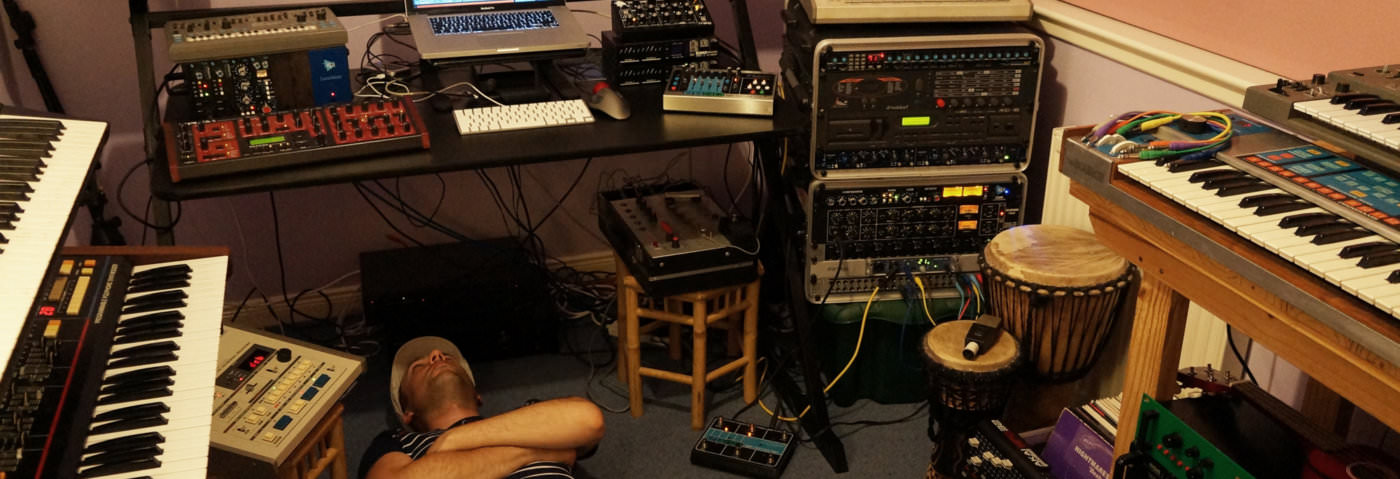Join us for a guided tour of John Clark’s studio, featuring an array of vintage classics and a few left-field oddities.
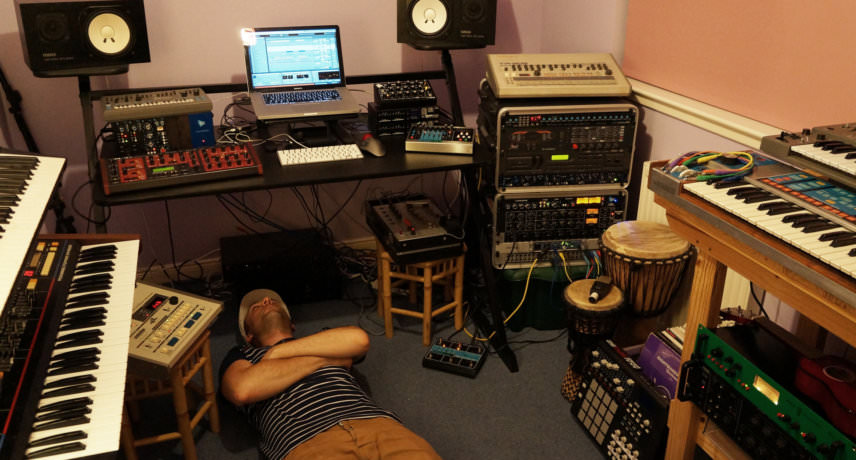
My Studio – Debukas
The most comfortable listening position. My best ideas tend to come whilst in this position or standing in a different room. Anywhere that’s not sitting down staring at the computer screen is favourable.
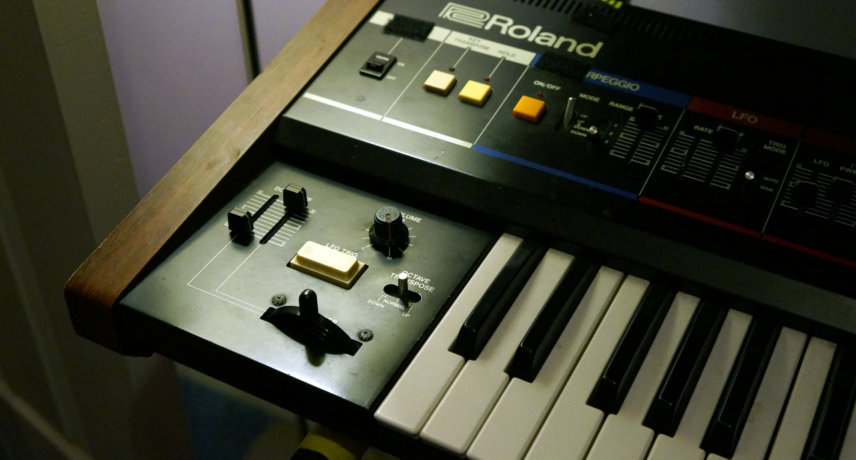


Roland Juno 60
To me the 60 is the king of the Junos. It sounds as good as the 6 and has a memory bank like the 106. This one hasn’t been retrofitted with MIDI, so I do it the hard way and program patterns on the MSQ-700 and hook it up over DCB. There are too many records to count that feature the Juno prominently. It doesn’t do anything overly exciting but what it does, it does very well. Thick chords, sparkly arpeggios. This hasn’t actually seen that much use due to lack of space, but since my Jupiter 6’s departure to hospital, it’s doing the do.
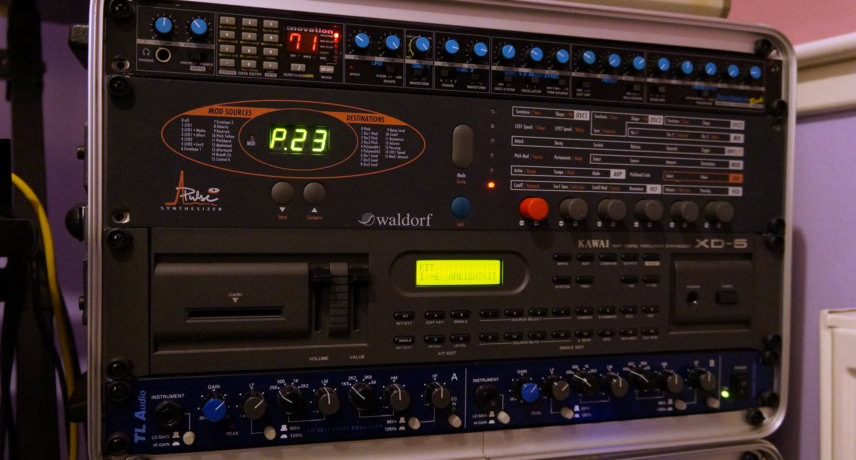


Novation BassStation, Waldorf Pulse+, Kawai XD-5 & TL 2011
A nice couple of analogue monosynths which have been around for years and are always reliable and help you get creative. The real oddball here is the XD-5. It’s a digital drum synthesiser, which sounds great for more industrial and techno type things. It uses ring modulation to make unusual sounding blips and zones, but also does a mean late 80s snare/clap sound.
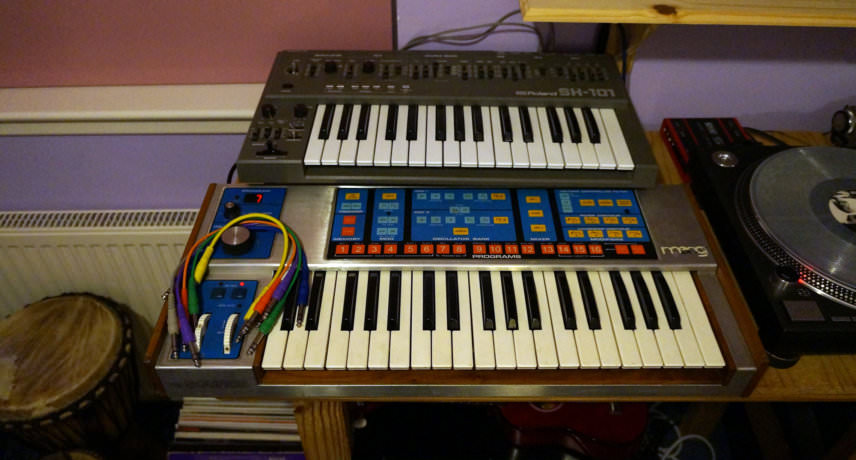


Roland SH-101 & Moog Source
The 101 is a mainstay of the studio and is usually used in sequencer mode with notes being triggered from the 909 or 707. The way these work is ingrained in my brain. I’ve used it on so much stuff, including this Model 500 tribute I did ages ago.
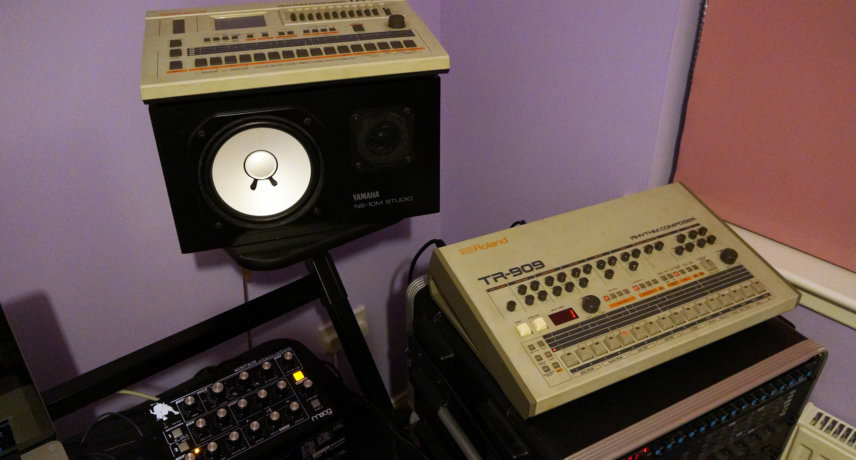


Roland TR-707 & TR-909
All I want for Christmas is an 808. But these two are real ‘bread-and-butter’ machines and I’ll always have a place for them. The 909 is a lot more versatile as it’s [mainly] pure analogue, but the sounds of the 707 are not only instantly recognisable, they pack a punch in the club. Loads of my tunes start out with these, before often being replaced with less standard sounds. Standard is good though, don’t get me wrong. I take the 707 out with me live, for those good time moments.
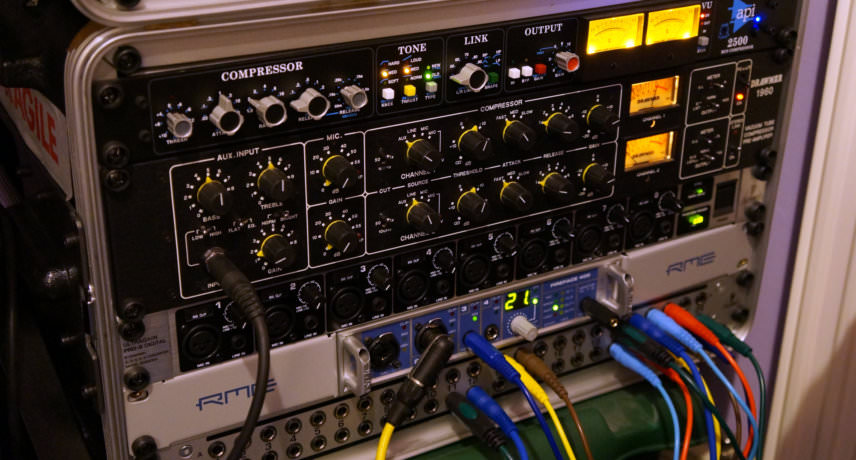


API 2500, Drawmer 1960, Behringer Pro-8, RME Fireface 400
The API bus compressor is the perfect sweetener for my mixes. It does pretty transparent compression, and I use it fairly lightly on full mixes. As a drum bus you can really whack it and get great results. These have fair shot up in price since I got this, so I’m even more delighted I have one.
The Drawmer is another great piece of preamp/EQ/compression kit. I’m a big fan of putting the 909 through this and giving it some dirt. Check my Aaron Carl tribute for an example.
I get by fine for now with the Fireface 400. I’ve got all the ins and outs at the back going through the patch bay, and use the Behringer for any extra ins and outs I might need.
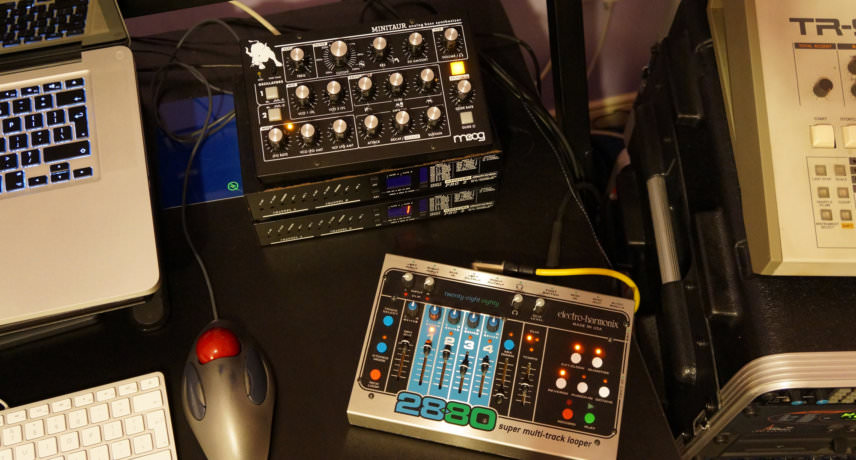


Moog Minitaur & EHX 2880
The Moog Prodigy that has featured on most of my tunes is stranded in London. The hassle of shipping it up to Scotland and back can get a bit much, so the Minitaur has become the perfect companion for doing live Moog stuff with 3% of the hassle. This is a genuine wee belter of a machine. It’s unmistakably Moog, and the fact I can USB/MIDI it up and do CV/gate is amazing. It also nearly fits in a jacket pocket.
I use the 2880 a lot when working on vocal ideas. It’s a MIDI-syncable loop recorder, and is superb for getting creative away from the computer. I’ve been using this live too. Great for building on-the-fly vocal loops or, depending on the venue, feedback loops! This is used on my tunes ‘Reach Out Feel’, ‘Knowledge’, ‘Send Me Out’, and you can see me fiddling with it in my Altern 8 tribute video.
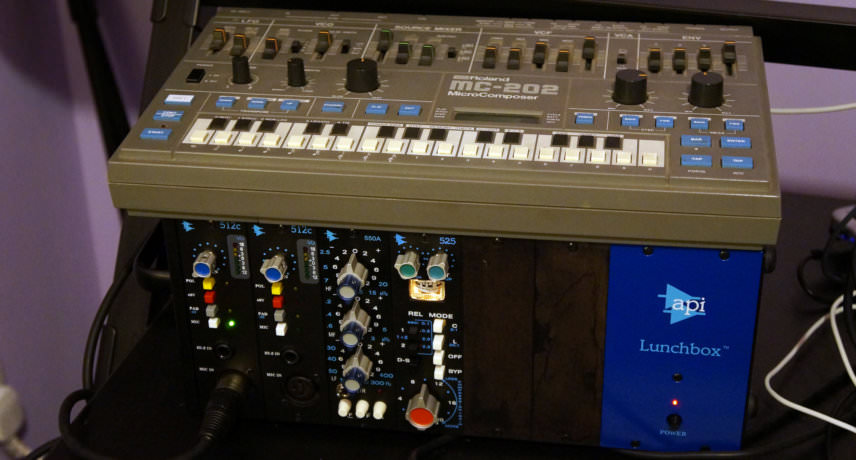


Roland MC-202
I love how confusing and rewarding the MC-202 is. It demands my total attention whilst programming it. It’s a cross between the SH-101 and the TB-303 and somehow manages to sound like neither. I use this a lot in my live studio jams, syncing it up to other gear with DIN sync. I did a gig years ago where I had the one pattern saved to ‘tape’ (i.e. Logic in the studio), then loaded the pattern back in at the gig by playing it from my phone. Don’t think I’ll bother with that again!
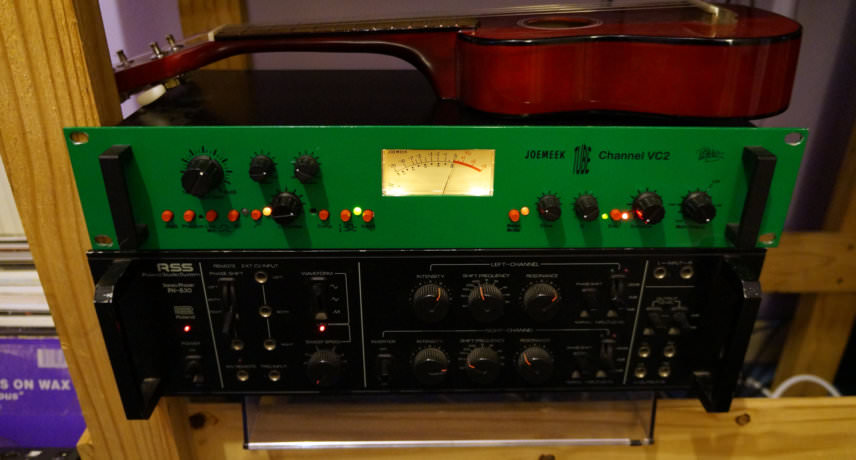


Joemeek VC2 & Roland PH-830
The VC2 is a complete character box. It’s a mic preamp with compressor and enhancer and does very Joe Meek things to sounds. Before the Jupiter-6 went to hospital, it was permanently wired into this thing. The PH-830 is a very sweet sounding phaser, and was part of the Roland Studio System in the 70s. It has CV inputs for controlling the phase rate and frequency externally.



Yamaha DX7s, Roland Juno 60 & MSQ-700 & Access Virus B
The DX7 is used for sounds but also as a MIDI master keyboard. It’s a beast that I haven’t got my head fully in to, in terms of programming it. It’s great for variety of sound, and offsets the analogue-heavy bias in the studio. A new tune of mine, ‘SHAKE’, has an amazing bass sound coming from this. The Virus is great for both analogue and digital sounds. I’ll probably start using this more when I play live.
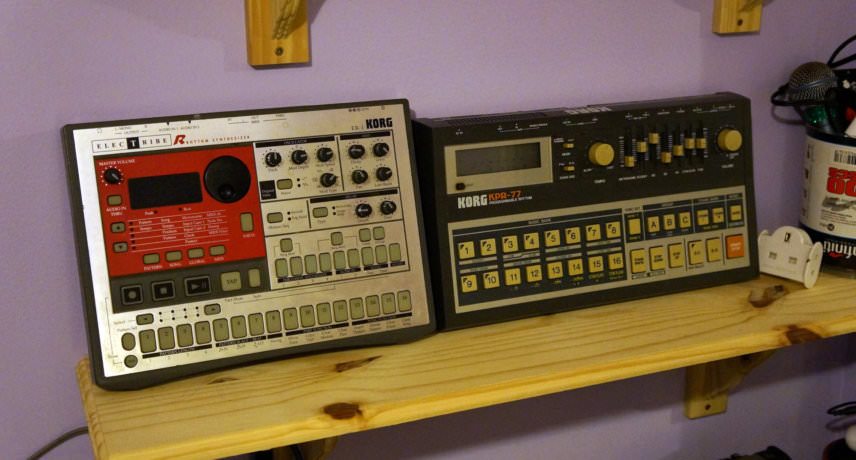


Korg Electribe ER-1 & KPR-77
The two shelves are a must have for all the various bits that end up getting unplugged and put aside. These drum machines get whipped out now and again, but whether or not they’re getting used, they’re nice to look at. I got the Electribe when everybody seemed to have one, then everyone got sick of the same sounds, now I think it’s great again. The KPR-77 was supposed to be a TR-606 competitor, but it’s a bit of an oddball, primarily as it doesn’t sync with any Roland stuff.
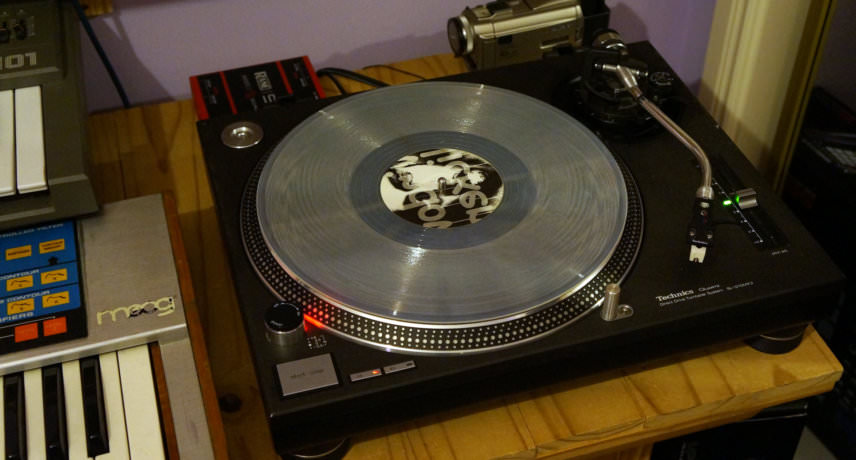


Technics 1210 Mk2
Doesn’t need any introduction. The synths to the left frequently find themselves on the floor to make way for mindless mixing. Note the high-tech Serato security device.
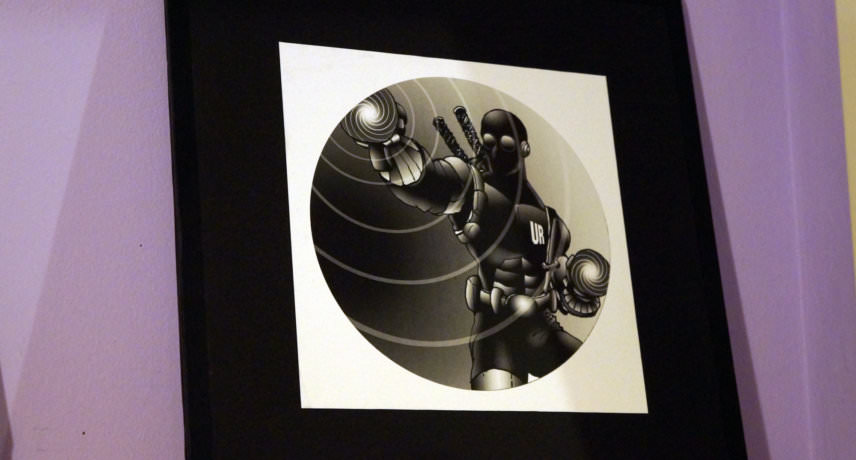


UR artwork by Abdul Haqq
A limited edition print made by Abdul Haqq, who is famous for his artwork for Model 500, UR, Planet E and plenty others. Got to pay my respect to Underground Resistance at any given opportunity.
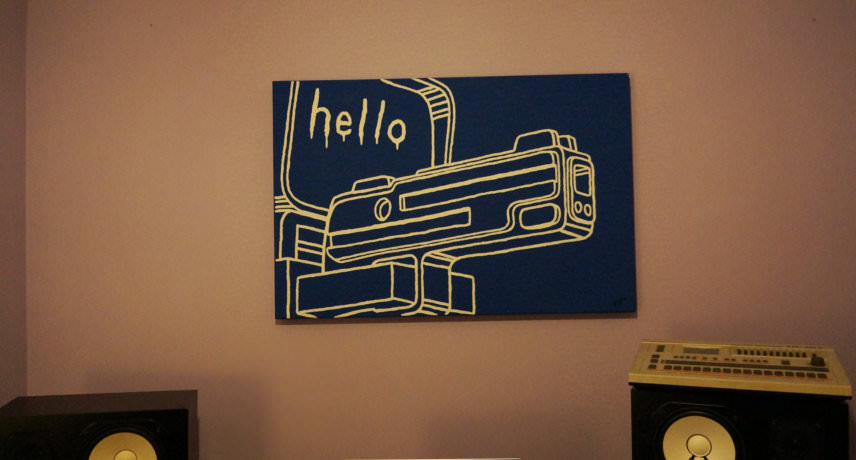


Hello
This canvas painting was done by FiST in 2003 and is my favourite bit of wall stuff in the studio. OK, it’s the only bit of wall stuff in the studio.
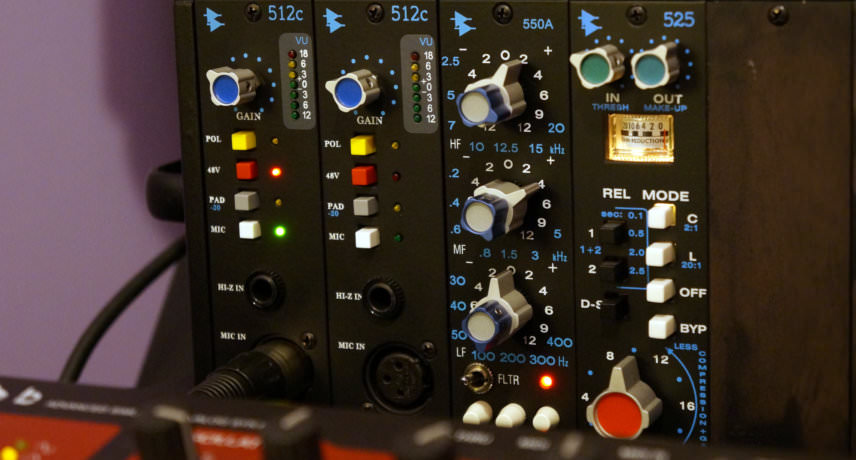


API Lunchbox
I couldn’t be without these four modules. If I need to do any acoustic recording such as vocals, percussion or stringed instruments, this is the kit I need. The preamps get the very best out of any mics or lines that go through them. The EQ is clean and super musical. The compressor is a genius design and works great for both light compression and limiting. Every tune I finish will have had some elements put through the lunchbox.
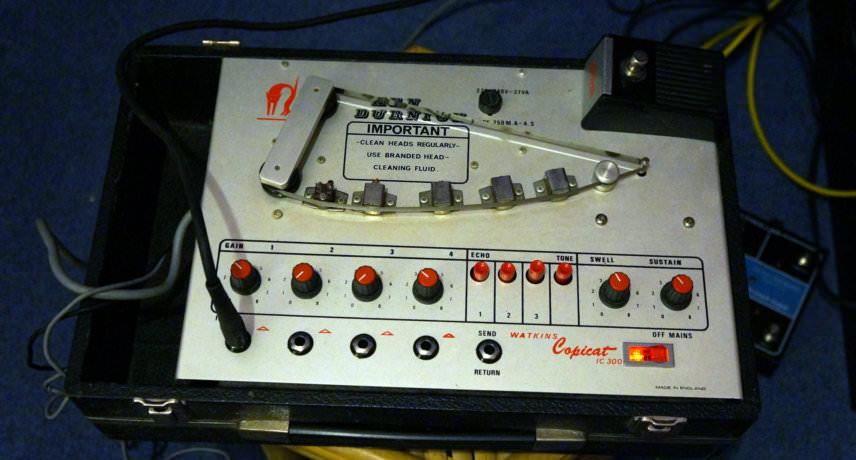


The WEM Watkins Copycat IC 300
One of my favourite bits of kit. It was made in the late 70s (I think) but could easily have come from the early 50s. It has four speeds, with no control over each individual speed. So you’re never going to get perfect BPM delay. I use this more for adding texture and colour to sounds, driving it just to the point of distortion. It’s all over my three EPs, very subtly in places. It can be heard most prominently on ‘Love Plant’, ‘Titanic’ and ‘Set Myself On Fire’.
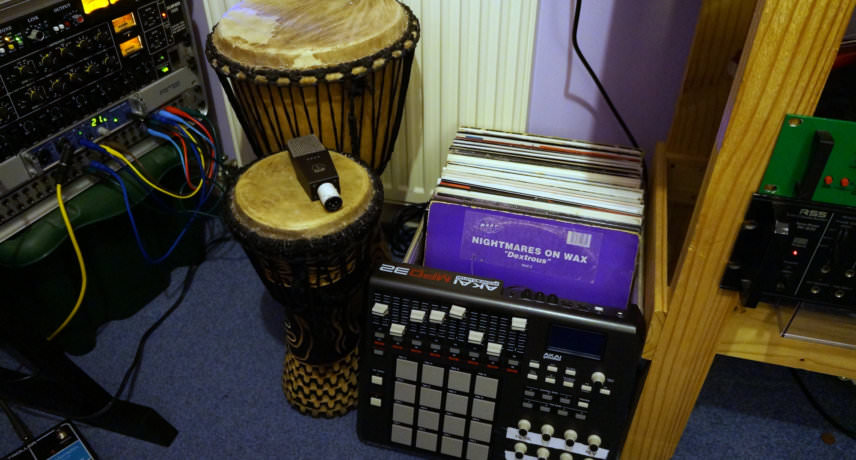


Djembes, AKG 414, Akai MPD & Records
You need to have stuff to hit in the studio. The djembes get a lot of action with hands, fingernails and sticks. They feature on a lot of my tracks, most clearly on ‘I Am Machinery’. The AKG mic is the one I tend to do vocals with, unless I’m just singing into the MacBook Pro’s mic (check ‘Some Days’). I use the MPD controller a lot when getting ideas down, and always when playing live. The Novation Launchpad also gets used a lot, though it’s stuck in the cupboard. Records = essential.
The Reach Out Feel EP is out now on 2020Vision, with an album to follow on the same label in October. Find Debukas on Facebook, Twitter and SoundCloud.
